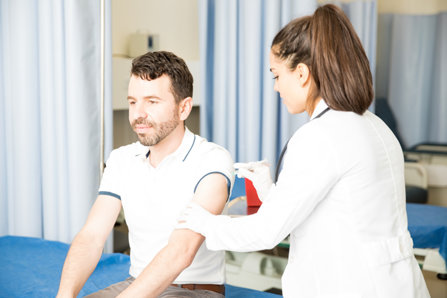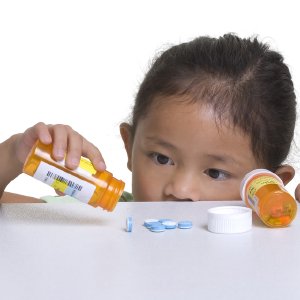Whatever Happened to Providing Abstinence Based Addiction Treatment?

Not so long ago, recovery from addiction meant that a person did not use any drugs or alcohol. That was what was expected if a person was truly successful after completing a rehab program or being a member of a group like Alcoholics Anonymous. But things have changed. Now, in thousands of rehabs across the country, what passes for “recovery” is compliance with a medication regimen.
According to the Substance Abuse and Mental Health Services Administration: “Medication-assisted treatment (MAT) is the use of medications with counseling and behavioral therapies to treat substance use disorders.” At this time, MAT is only available for addiction to opioids (heroin, fentanyl, prescription painkillers), alcohol or tobacco.
While agencies like the National Institute on Drug Abuse (NIDA) and the Centers for Disease Control and Prevention (CDC) promote the use of MAT for opioid addiction or alcoholism, they provide little guidance on what recovery from opioids or alcoholism while using medications should look like. According to these agencies, success includes compliance with a regimen of medications rather than continued abstinence. While these approaches may offer some reduction in issues related to drug use, it does little to offer the individual a real way out of their chemical prison.
There are instances when these drugs are used temporarily—such as in detox, or in the case of naloxone, for an immediate overdose-reversing life-saving intervention—that medications do have some utility in the treatment of addiction. This is true, especially in cases where detox may present a substantial barrier to someone beginning a drug treatment program at all. In these cases, withdrawal symptoms can be eased, and thus allow those with medical conditions or a debilitating fear of withdrawal a way to become abstinent without the additional health risk or waiting until the individual hits “rock bottom.” Even in these cases, abstinence-based recovery should be the ultimate goal.
Types of MAT for Opioid Addiction
- Methadone: For opioid addiction, methadone has been administered for more than fifty years. This synthetic opioid replaces the heroin or painkiller a person was previously consuming, preventing the person from triggering withdrawal sickness. It is normally administered in liquid form. Those in recovery must show up every day at a methadone clinic to get their dose. This severely limits their movements or ability to travel. After some years of good compliance with the program, some people get permission to take a few doses home after each visit to the clinic.
- Buprenorphine formulas: Buprenorphine is a painkiller like methadone, oxycodone or hydrocodone. As a MAT drug, it is formulated into a pill or a small piece of film that dissolves under the tongue or inside the cheek, an injection or an implantable device. The most commonly-known form of this drug is a formula called Suboxone. In this form, buprenorphine is combined with naloxone in an effort to prevent the abuse of the drug.
Because methadone and buprenorphine are both opioids, they not only prevent an addicted person from going into withdrawal, they also affect a person’s mental state and physical health. Both methadone and buprenorphine can cause euphoria and respiratory depression, just like heroin, fentanyl and other drugs.

Both drugs are also traded on the illicit market. Some people abuse them, some people save their doses for days when they can’t get their hands on their preferred drugs, and some people trade their doses for other drugs they prefer. It is easier to overdose on methadone than on buprenorphine, but ODs on buprenorphine are not unheard of.
MAT for Alcoholism
While there may be many medications prescribed in the course of recovery from alcoholism, three drugs are considered medication-assisted treatment for this problem.
- Disulfiram: Many people know this drug by its brand name, Antabuse. This drug prevents the body from fully breaking down alcohol so it can be eliminated from the body. The metabolic process stops when alcohol has been broken down into acetaldehyde, which is a toxic chemical that makes people sick. If a person drinks alcohol while taking Antabuse or any other form of disulfiram, they suffer nausea, headaches, vomiting, chest pains and difficulty breathing for hours. The goal here is deterrence, rather than avoidance of symptoms. However, Antabuse alone is not likely to address the underlying issues which began the addiction.
- Acamprosate: This drug may be known by its brand name, Campral. This drug is thought to help some people stay abstinent from alcohol. Unfortunately, it comes with an increased risk of suicidal thoughts and attempts. Other side effects include diarrhea, dizziness, anxiety, depression, nausea, vomiting and headaches.
- Naltrexone: This drug is used to help reduce a person’s desire to drink. It is also used to block the effects of opioid drugs during treatment for addiction. The most common side effects include nausea, headaches, dizziness, fatigue and insomnia.
With the growing number of agencies and individuals calling for the use of MAT in treatment, what seems to have been forgotten is that it is possible to recover from addiction without medication and enjoy a sober, productive and 100% drug-free existence.
However, as more programs and professionals rely on these drugs during treatment, the concept of being abstinent, not only from abused drugs but also from treatment drugs, has faded from public attention.
Support for Abstinence
There are organizations and individuals that support the idea of striving for full abstinence from drug or alcohol use. At one time, drug courts rarely allowed MAT to be used in conjunction with its programs. In many cases, this is still the case, but that is in danger of changing.
Drug court diverts some people with drug charges away from incarceration as long as they meet certain requirements and pass drug tests. For example, they might be required to find steady employment and have a stable living situation. After a certain period of compliance, they would be released from drug court supervision. Some drug courts don’t permit the people under their supervision to rely on MAT drugs like methadone or buprenorphine if they are going to participate in this program. Their emphasis is on maintaining abstinence.
Also supporting abstinence are Alcoholics Anonymous, Narcotics Anonymous and other Twelve Step-based programs. Plus, there have always been faith-based and community initiatives that support those in recovery as they strive to achieve abstinence.
Perhaps the saddest aspect of the issues of abstinence vs. medication-assisted treatment is that some people who are directed into MAT programs don’t realize that abstinence is a viable choice for recovery. They may think their only route out of addiction is to continue to rely on addictive or toxic substances.
As we said, there are some people who use these drugs as a temporary bridge to sobriety. Buprenorphine, in particular, offers some people a way to settle their lives down while they find the right rehab. Then they can be tapered off this medication and receive counseling or life skills training to enable them to succeed at living fully drug-free.
There are also a small number of people who are too ill to go through withdrawal. For this small number, these medications may offer the chance to stabilize and avoid the dangers of overdose or withdrawal.
As with any issue in life, it’s not completely a situation of black or white, all good or all bad. The drugs used in MAT can provide some aid to provide effective treatment, but abstinence-based recovery should always be the preferable path to recovery.
Sources:
- https://www.drugabuse.gov/publications/research-reports/medications-to-treat-opioid-addiction/overview
- https://www.cdc.gov/opioids/Medication-Assisted-Treatment-Opioid-Use-Disorder-Study.html
- https://www.samhsa.gov/medication-assisted-treatment/treatment/buprenorphine
- https://www.samhsa.gov/medication-assisted-treatment/treatment
- https://khn.org/news/black-market-for-suboxone-gives-some-a-glimpse-of-recovery/
- https://bmjopen.bmj.com/content/5/5/e007629
- https://www.samhsa.gov/medication-assisted-treatment/treatment#medications-used-in-mat
- https://www.narconon.org/blog/new-research-reveals-alcohols-destructive-power.html
- https://www.aafp.org/afp/2006/0815/p645.html
- https://www.narconon.org/drug-abuse/alcohol/
- https://www.narconon.org/drug-rehab/alcohol-rehab.html
- https://harmreduction.org/about-us/principles-of-harm-reduction/
- http://www.drugpolicy.org/safetyfirst/download
- https://www.post-gazette.com/news/health/2018/05/14/Drug-courts-divided-addiction-medications-Narcotics-Anonymous-Allegheny-County/stories/201805140003
- https://www.cochrane.org/CD005032/ADDICTN_alcoholics-anonymous-aa-is-self-help-group-organised-through-an-international-organization-of-recovering-alcoholics-that-offers-emotional-support-and-a-model-of-abstinence-for-people-recovering-from-alcohol-dependence-using-a-12-step-appr
- https://www.narconon.org/drug-rehab/life-skills.html


 ®
®